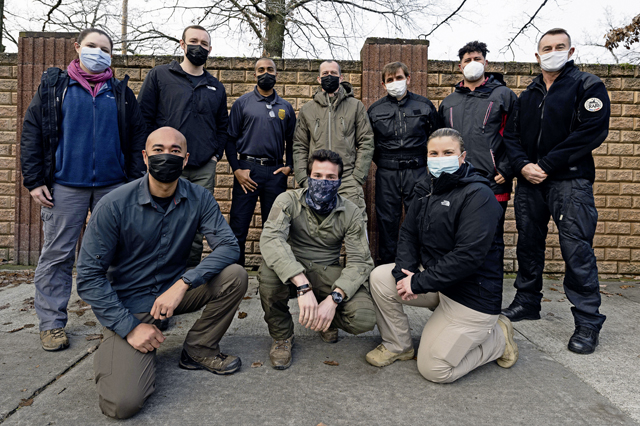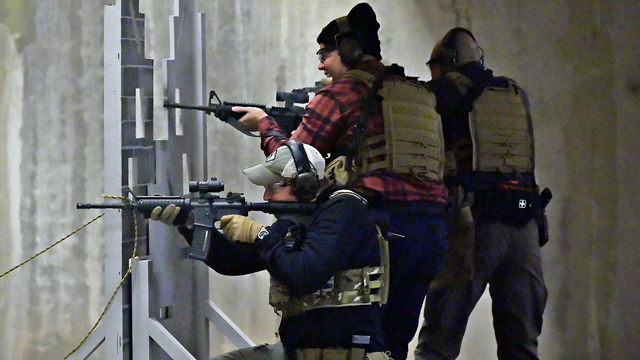Members of the Office of Special Investigations Detachments 501, 515, and 538 and French law enforcement partnered up for the first time in a three-day subject matter expert engagement from Jan. 11-13, sharing tactics, techniques and strategies with each other.
Detachment 501 and members of French units “Recherche, Assistance, Intervention, Dissua-sion” (Search, Assistance, Intervention, Deterrence), or RAID, and Groupe d’intervention de la Gendarmerie Nationale, or National Gendarmerie Intervention Group (GIGN), specialize in protective service details as well as critical law enforcement operations in high-risk circumstances or areas, helping lead to a team-up nearly two years in the making.

“It’s a very rare opportunity,” said Special Agent Christopher Santiago, OSI Detachment 501 special agent-in-charge and personal security advisor to the commander of United States Air Forces Europe – Air Forces Africa. “Most of the time you don’t get to meet anybody like them because of the nature of their jobs, and it’s the same thing for us.”
Training engagements such as these help prepare the groups for future real-world scenarios where they may have to collaborate as well as build confidence and understanding of each other’s capabilities.
“It’s important to do the training now so that when the time comes we can be interoperable and operate together globally,” said Col. Terrence Joyce, Office of Special Investigations 5th Field Investigations Region commander.
The main activities of the engagement were spread out through three days. On the first day, the two groups practiced VIP protection strategies at the Combat Arms Training and Maintenance facility. The groups fired different types of guns, progressing from M-11s to MP-5 and M-4s.

The group drove to a law enforcement vehicle training facility on the second day where they conducted several scenarios involving protecting VIPs in a vehicle. Snowfall also added an unexpected challenge for the group.
The final day consisted of a closed-door briefing where they exchanged best practices for VIP protection in high threat areas, with specific events related to real world events in recent history.
With both agencies often tasked with organizational responsibilities, the partnership was initially difficult to come to fruition.
“The exchange was difficult to schedule due to constant real-world, operational responsibilities,” Santiago said. “However, since it was of great importance to all the partners involved, they utilized the one week everyone was free during a six month period.”
Despite the business of all parties involved, Santiago hopes to have the three units engage on a more frequent basis.
“We’re all sharing knowledge, experience, different training tactics and techniques,” Santiago said. “All these different things we’ve learned over the course of our years is allowing us to have a really good exchange between the three organizations.”


